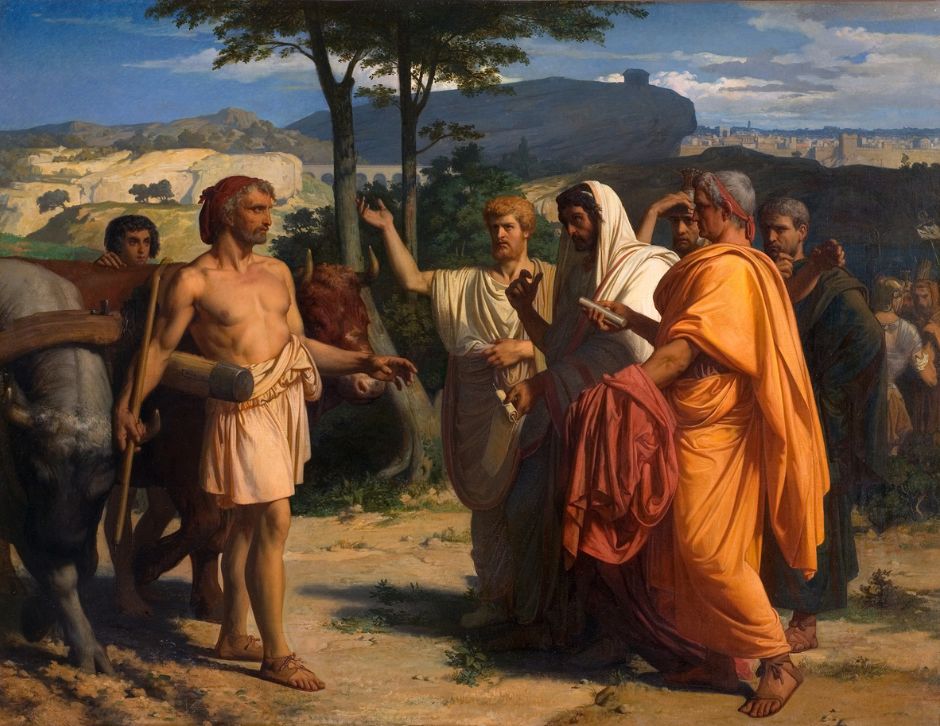Alexandre Cabanel was a prominent French painter of the 19th century, celebrated for his masterful technique, exquisite detail, and ability to capture ethereal beauty within his works. Born in Montpellier in 1823, Cabanel quickly rose to prominence in the French art world, becoming one of the leading figures of the academic art movement. His style, characterized by its romanticism and idealization of the human form, earned him significant acclaim during his lifetime, making him a favorite among the aristocracy and a frequent recipient of governmental commissions.
Cabanel’s education at the École des Beaux-Arts in Paris and his subsequent victories in the Prix de Rome set a solid foundation for his artistic career. These achievements not only granted him prestigious residencies in Italy but also secured his position as a respected teacher at the École des Beaux-Arts. His influence on the next generation of artists was profound, mentoring figures who would go on to challenge and redefine the boundaries of art themselves.
As a painter, Cabanel was known for his religious, mythological, and historical subjects, imbuing each painting with a sense of divine beauty and purity. His technique was meticulous, characterized by smooth, almost imperceptible brushstrokes that created a highly polished finish. This attention to detail and his ability to render the human body in such a lifelike manner garnered him much praise, with his works being sought after by collectors and museums alike.
One of Cabanel’s most famous paintings, “The Birth of Venus,” epitomizes his style and thematic preferences. Unveiled at the Salon of 1863, it was immediately purchased by Napoleon III, a testament to Cabanel’s status at the heart of French art culture. This painting, depicting the mythological birth of Venus from the sea, showcases Cabanel’s skill in portraying the female form in a manner that is both idealized and sensuously appealing, capturing the imagination of viewers then and now.
However, it is the “Fallen Angel” painting (1868) that stands as one of Cabanel’s most intriguing and complex works, offering a stark contrast to the serenity and idealized beauty found in much of his oeuvre. This painting depicts a brooding, winged angel seated amidst a desolate landscape, his expression one of deep sorrow and introspection. The angel’s fall from grace, implied by his downcast gaze and the stormy sky above, evokes a profound sense of empathy and contemplation in the viewer.
In “Fallen Angel,” Cabanel’s mastery of light and shadow is evident, as is his ability to convey complex emotional states through facial expression and body language. The angel’s wings, exquisitely detailed and rendered with a delicate touch, contrast sharply with the rough, dark terrain below, symbolizing the dichotomy between celestial purity and earthly desolation. This juxtaposition serves to deepen the painting’s emotional impact, inviting audiences to reflect on themes of sin, redemption, and the human condition.
The painting’s reception at the Salon of 1868 was mixed, with some critics praising its technical excellence and emotional depth, while others found its subject matter controversial. Regardless, “Fallen Angel” painting has endured as one of Cabanel’s most celebrated works, admired for its technical prowess and its poignant exploration of themes that resonate with the human experience. It stands as a testament to Cabanel’s versatility as an artist and his willingness to explore the darker aspects of mythology and human nature.
Beyond “Fallen Angel,” Cabanel’s portfolio includes other notable works such as “Echo,” “Phedre,” and “Cleopatra Testing Poisons on Condemned Prisoners.” Each of these paintings further demonstrates Cabanel’s fascination with classical and literary themes, as well as his skill in depicting the human figure in diverse and compelling narratives. His portrayal of Cleopatra, in particular, highlights his talent for capturing the complexity of historical figures, blending realism with idealization to create portraits that are both captivating and thought-provoking.
Cabanel’s influence extended beyond his own canvases, as he played a significant role in the academic system of art education in France. His position at the École des Beaux-Arts allowed him to shape the artistic directions of countless students, many of whom would go on to make significant contributions to the art world. Cabanel’s commitment to academic principles, combined with his openness to the evolving tastes of the art market, ensured that his teachings remained relevant and respected.
Despite the shift in artistic tastes towards the end of the 19th century, with the rise of Impressionism challenging the academic norms Cabanel epitomized, his work continued to be celebrated for its beauty and technical skill. Today, Cabanel is remembered not only for his contributions to the academic art movement but also for his ability to capture the sublime and the beautiful, making the ethereal tangible through his brush.
His legacy is preserved in museums around the world, where his paintings continue to captivate audiences with their timeless beauty and emotional depth. As a bridge between the classical and the modern, Cabanel’s work offers a glimpse into a world where myth and reality intertwine, inviting viewers to explore the depths of human emotion and the beauty of the ideal form.
In conclusion, Alexandre Cabanel’s oeuvre represents a pinnacle of 19th-century academic art, characterized by its romantic idealization, technical mastery, and emotional depth. From the divine beauty of “The Birth of Venus” to the introspective sorrow of “Fallen Angel,” his paintings capture the complexity of the human spirit and the eternal quest for beauty. As we reflect on Cabanel’s contributions to art and culture, it becomes clear that his legacy is not only in the subjects he chose to depict but also in his unwavering commitment to the pursuit of perfection in art. Through his paintings, Cabanel continues to inspire, challenge, and enchant, securing his place in the annals of art history as a master of his craft.
